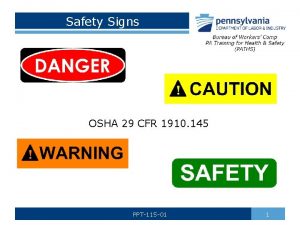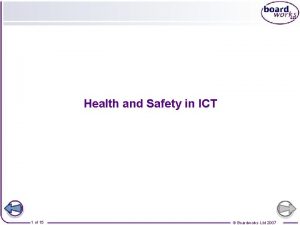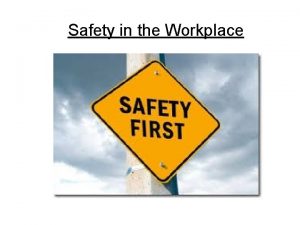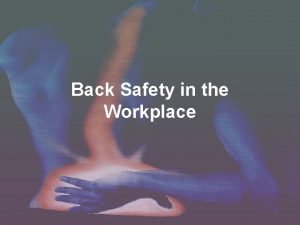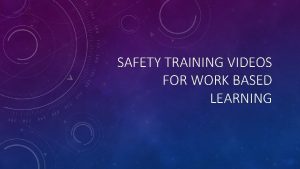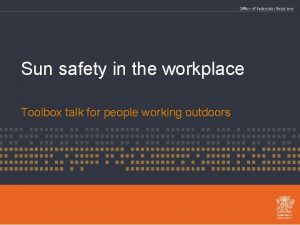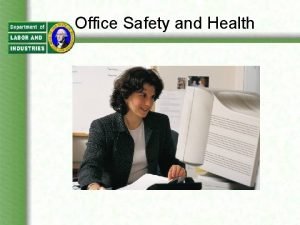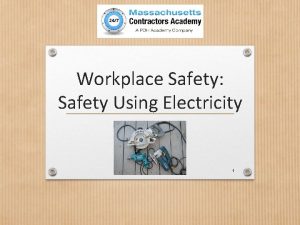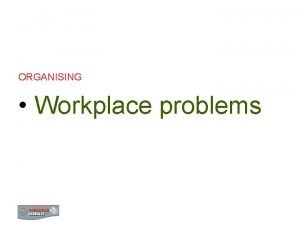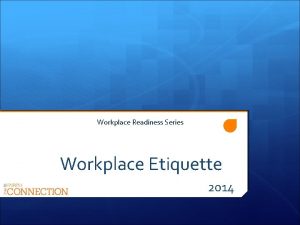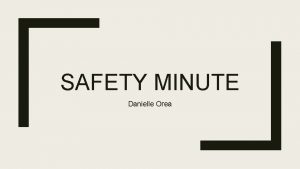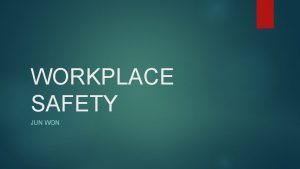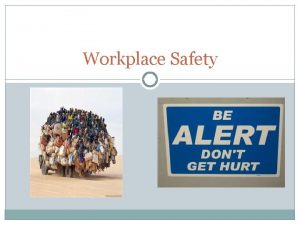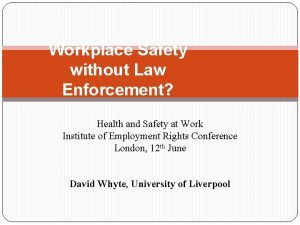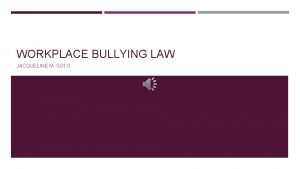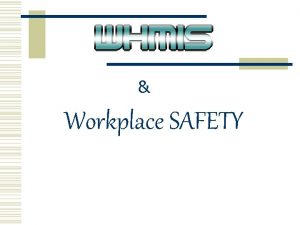Workplace Safety Chapter 3 Safety and the Law











- Slides: 11

Workplace Safety Chapter 3

Safety and the Law • Premises – on and in the property • *Liability – legal responsibility that one has to another • Reasonable care – the care an ordinary person would take to thoughtfully and carefully implement precautions to operate a safe workplace environment for employees as well as guests

Government Regulations • *Occupational Safety and Health Administration (OSHA) – federal agency that creates and enforces safety • Occupational Safety and Health Act of 1970 • Must display OSHA posters No. 2203 or No. 3165 – job safety and health protection (Fig. 3. 1, pg. 159) • Foodservice must report deaths and injuries of 3 or more within 8 hours • Other injuries and illnesses within 6 working days • Must log all on Form No. 300 (see Fig. 3. 2, Pg. 160)

The Fair Labor Standards Act (see Table 3. 1, pg. 158) 14 and 15 years of age • Restricted number of hours work • No baking • Some cooking – No: • open flames • over 140 F • Power-driven machinery (i. e. , meat slicer) 16 and 17 years of age • Unlimited hours of work • Except hazardous equipment – may not use (power-driven cutters and mixers)

*Material Safety Data Sheet (MSDS) • • Safe use and handling of chemicals Precautions Protective equipment to use First Aid Manufacturer’s name, address and phone number Preparation date of the MSDS Hazardous ingredients and identity info. Often sent with materials – displayed for easy access

Gov. Regs. cont. • Safety Audit - Safety inspection of facilities, equipment, employee practices and management practices • Personal Protective Equipment (PPE) • NO: baggy clothes, jewelry, scarves or neckties, *open -toed shoes • YES: skid-resistant soles; non-porous (like canvas); low-heels; closed toes; water, heat and grease resistant

PPE (cont. ) • No rubber gloves with hot items • Mitts and gloves must be dry – water conducts heat • Disposable gloves with food • Check protective clothing and equipment for worn spots and defects or damage

Emergencies and Prevention • Emergency Plan – before a disaster to protect workers, guests, property • Floor plan: first-aid, alarms, sprinklers & fire extinguishers • Evacuation routes • Telephone numbers for each type of emergency • Accident Investigation – (see Fig. 3. 6, pg. 168 and list) • Evacuation – different routes for different threats

Fire • Fire Hazards- faulty electrical wiring or improper use of equipment • *Classes of fires and extinguishers (see Table 3. 4, pg. 177)

Classes of Fire and Extinguishers Page 177 *Class A extinguisher

Portable Extinguishers Page 179
 Chapter 10 workplace safety procedures
Chapter 10 workplace safety procedures Newton's first law and second law and third law
Newton's first law and second law and third law Newton's first law and second law and third law
Newton's first law and second law and third law Electrical safety signs and symbols ppt
Electrical safety signs and symbols ppt Ict workplace health and safety
Ict workplace health and safety Boyle's law charles law avogadro's law
Boyle's law charles law avogadro's law Avogadro's law constant
Avogadro's law constant Workplace safety vocabulary
Workplace safety vocabulary Back safety in the workplace
Back safety in the workplace Free osha training videos
Free osha training videos Sun exposure safety talk
Sun exposure safety talk Chair hazard
Chair hazard



